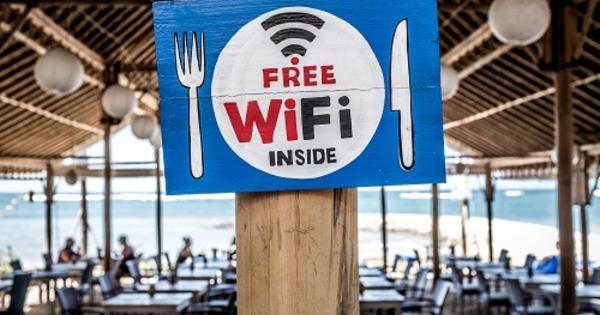Windows is a relatively heavy operating system, so your PC or laptop may no longer be able to handle it after roughly a decade. With a lightweight operating system such as Chromium OS (CloudReady) or Linux Mint, you give the machine a second life. Chromium OS is mainly set up to use online Google services, while Linux Mint gives you a more traditional operating system. A machine with a reasonable processor and 2 GB of ram is enough to get started.
1 Chromium OS
The Chromium project's official website doesn't contain any download links, so we're forced to pick up the installer elsewhere. Although there are various third parties that offer 'ready-made' images, the installation and use of these images proves to be quite a challenge in practice. If you still want to try it yourself, you can find recent installation files online. Know what you're getting into, because it's difficult to get such a contrived version to work. In this workshop we opt for more ease of use and we will get started with CloudReady. This free operating system is based on Chromium OS.

2 USB program
You install CloudReady immediately from a bootable USB stick. For this you need a copy with at least 8 GB storage capacity. The makers of CloudReady offer their own tool for creating the bootable USB stick. You install it on any Windows machine. Surf to Neverware.com and scroll down a bit. You then click on Download usb maker, then run the exe file. An installation is not necessary, because the main window appears immediately.

3 Prepare USB stick
Now first insert the USB stick into the computer. Through Next you can choose between a 32bit or 64bit version. It is important that you select the correct option, so check the architecture of the machine you want to use CloudReady with if necessary. Since we are going to install the operating system on an old system, we choose 32 bit in this workshop. Click twice again Next and select the correct USB storage device. Through Next the program downloads the image and then creates a bootable USB stick. That takes about twenty minutes. Finally, close with Finish.

4 Customize Boot Menu
When the bootable USB stick is ready for use, safely remove this storage medium from the computer. Then insert the USB stick into the machine on which you want to install CloudReady. It is important that you select the external storage medium as the first startup disk. You can arrange this by changing the so-called boot menu within the system menu (bios or uefi) of the computer. Turn on the PC or laptop and press a specific hotkey during the startup phase to open the system menu, for example F2, F10 or Delete. Now find the startup settings and select the USB stick as the first storage drive. Exactly how that works is different for every system. Finally, restart the machine.

5 Launch CloudReady
After waiting about five minutes, a welcome window will appear. The interface is in English by default, but you can easily change that to Dutch. Click on the current language at the bottom left English (United States) and choose Dutch – Dutch / OK. Through To work you will arrive in the network settings. If you have plugged a network cable into the machine, you don't have to do anything. Do you use Wi-Fi? Then click on the correct network name and enter the corresponding password. Confirm with Make a connection. click on Next one and tick whether CloudReady is allowed to collect user information. Finally click Continue.

6 Login
As mentioned, CloudReady is based on Chromium OS. This means that all kinds of Google services are intertwined with this operating system. It is therefore not surprising that CloudReady asks for your Google user data. If you don't trust it completely, you can More options / Create account If necessary, create a separate Google account for this purpose. Through Take a tour some functions of this operating system are reviewed. For example, you notice that you can open apps using the Launcher at the bottom left.

7 Install
You are currently in the CloudReady live environment. So the operating system is not yet installed on the computer. Click on the digital clock at the bottom right, a compact settings menu will pop up. Once you choose Install OS, an English installation wizard will appear. Be aware that the operating system will overwrite any existing data on the internal hard drive. Confirm with Install CloudReady / Erase hard drive & install CloudReady. After a while, the system will reboot. You can now definitely get started with CloudReady.

8 Linux Mint Cinnamon
Linux Mint is a worthy Windows alternative, with the important difference that this operating system also runs smoothly on older systems. Unlike CloudReady, you can easily install useful software. There are several versions of Linux Mint. For example, Mate guarantees a stable working environment, while Xfce places very low demands on the hardware. The most complete and most beautiful edition is Cinnamon and that is why we will work with this version in this workshop. Visit Linuxmint.com and decide whether you want to get the 32bit or 64bit version of Cinnamon. Then click on a Dutch download link and save the iso file.

9 Etcher
Like CloudReady, you also install Linux Mint from a bootable storage medium. For example, you can burn the just downloaded ISO file to a DVD. But because not every machine has a CD/DVD drive on board anymore, we create a bootable USB stick using the free program Etcher. This tool is available for Windows, macOS and Linux. Surf to balena.io and click on the green download button to download the installation file. Once you have completed the installation, a modest dialog box will appear.

10 Bootable USB stick
Although Etcher is in English, the use of this tool is fortunately not very complicated. Click on the blue button Select image and select the Linux Mint iso file. Then confirm with To open. Check in the middle whether the correct USB stick is selected. Through Change if necessary, designate another USB storage medium. Finally click on Flash! to create the bootable USB stick. This usually takes a few minutes. If you get the message Flash Complete you can close Etcher. Insert the USB stick into the system on which you want to install Linux Mint and boot the machine from the USB stick. If necessary, read the instructions from step 4 'Adjust boot menu'.

11 Live environment
As soon as you start up the old PC or laptop from the prepared USB stick, the live environment of Linux Mint Cinnamon will soon appear. Handy, because that way you can see without any further obligations whether this operating system is something for you. Click, for example, on the menu button at the bottom left and discover which programs are available by default. Although the working language of the live environment is English, you can easily change it to Dutch during the final installation. Click on the shortcut Install Linux Mint and choose Dutch. Through Further change the keyboard layout if necessary. When using a wireless network connection, enter the correct network name and password in the next step. Click on Continue again.

12 Installation
Linux Mint can independently fetch drivers of certain hardware. Tick the option Install third-party software for video cards and wireless networks, Flash, MP3 and other multimedia types on and click Further.
You can choose from various options for installing Linux Mint on your computer. The option Erase disk and install Linux Mint is a good choice if you only want to run Linux Mint on the machine. If there is still an (old) Windows version on the system, you can use the option Install Linux Mint alongside Windows Selecting. This creates a so-called dual boot system. Make a choice and click Further. Then decide on which drive you will install Linux Mint and confirm with Install now.

13 User account
During installation, Linux Mint wants to know your current location. Amsterdam is already filled in for users from the Netherlands, but you can also type in another city. You will then be asked for account information. You always need a user account for this operating system. Through Further for that reason, enter a name, computer name and username. You may only use small characters for the username. Also type in the password twice and decide whether you want to log in automatically in the future. You tick the option without obligation Encrypt my personal folder so that your files are extra protected. click on Further and wait for the installation procedure.

14 Start up
After the installation, you will automatically return to the live environment. click on Restart now. Type in the set password and press Enter. It then takes a while before the Dutch-language welcome window appears. Through first steps you will see, among other things, how to create snapshots (restore points) and how to install drivers and read how to update Linux Mint. Finally, you use the part Program management to install interesting software.


